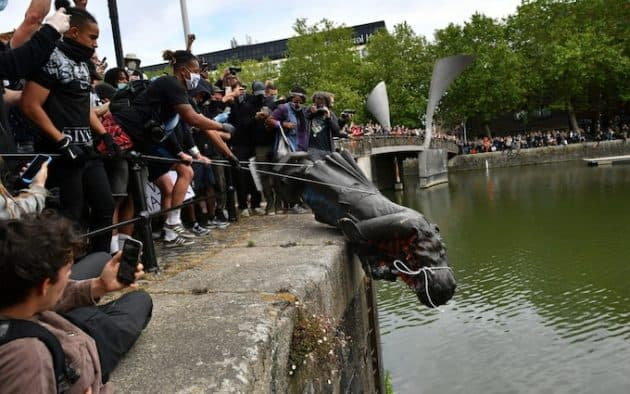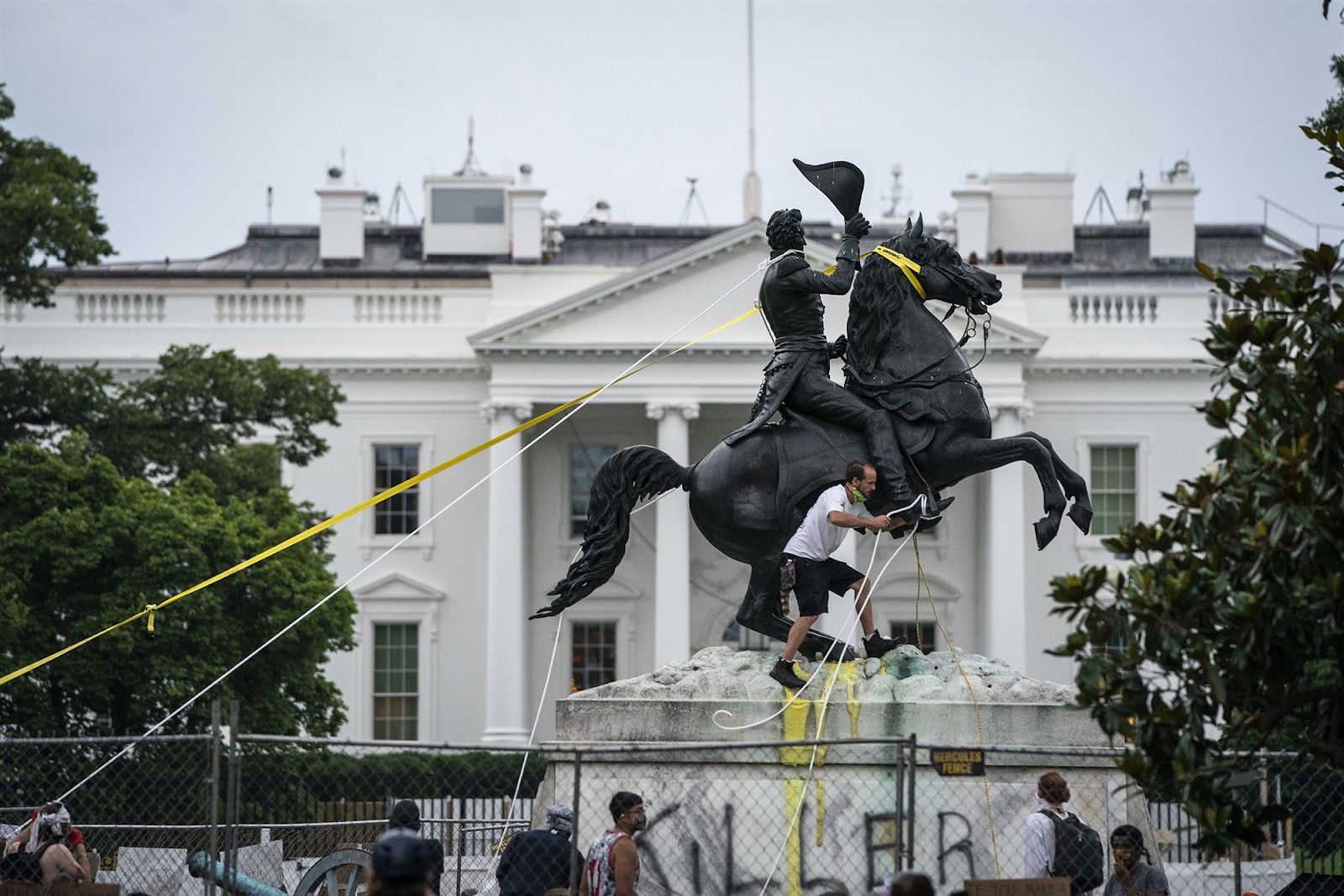Tearing Down the Shoulders of Giants
by Oscar Lloyd, Form VI
5 min. read — April 16, 2021
My elementary school was named after General Douglas MacArthur. A huge plaster bust of his head sat in the entranceway. I didn’t know who he was, all I knew was that I was proud to attend that school and that his name had become a key part of my youth. The actual man had a damning history of anti-Asian racism and brought Korea close to becoming a nuclear holocaust in the name of imperialism.
What three people would you build statues of to represent the ideals of [a] new nation?
In hindsight, someone like this probably doesn’t merit having a school named after them or having their face fawned over by impressionable kids like me. But we have to name our schools after someone, right? We have to hold some people as figureheads to look up at, right? Just for a moment, consider this: the world as we know it has fallen, and you are building your own country from the ruins of the old. What three people would you build statues of to represent the ideals of your new nation?
As an American, it would probably be some of the founding fathers, Thomas Jefferson perhaps. If you were British, statistics show it would probably be Winston Churchill. But why do these people represent the absolute best of what it means to be us? Jefferson wrote Notes on the State of Virginia in 1785, in which he declared Black people to be inferior in beauty, intelligence, artistry, and imagination, and went on to defend his own ownership of slaves; Churchill, the saviour of modern Britain, stated that “I do not admit that a wrong has been done to the red Indians of America or the Black people of Australia by the fact that a stronger race, a higher-grade race… has come in and taken their place” and would go on to prove it by shelling “uncivilized tribes” with poison gas. Surely there must be a bit of cognitive dissonance when we say that racism is a thing of a distant past while monuments to professional racists surround us, honouring those who built their livelihoods on it.
Contrary to what you may believe, these were not universally held beliefs at the time. The French thinker Michel de Montaigne had condemned colonialism and ethnocentrism back in the 1500s, and the first anti-slavery movement in America was started in 1688, almost a century before Jefferson authored his treatise.
So as not to slide down the slippery slope, it's not as if the streets would be entirely void of statues. When it comes to our ideals and benchmarks, there are plenty of people who are more worthy of a marble plinth than a slave owner. It's not difficult to think of any number of great Americans within the past 50 years alone—influential writers, thinkers, activists, even sports figures and cultural icons—who deserve more recognition for shaping the cultural landscape of our modern day. Why should we honour those who have caused so much suffering over the men and women who fought to make this world a better place?
If we continue building upon people like Churchill and Jefferson, or most of our former heroes for that matter, those whose foundations are rotten to the core, we risk collapsing as the threads of their ideal personas begin to unravel.
Now back to the question. We are constantly standing on the shoulders of giants, building what we know for the future based on the past. If we continue building upon people like Churchill and Jefferson, or most of our former heroes for that matter, those whose foundations are rotten to the core, we risk collapsing as the threads of their ideal personas begin to unravel. Think back to your three people who you built statues of. Look closely at the cracks in the stone; you can probably unravel each of them right now. Their foundations are likely far weaker than you first thought.
It is up to us to build new foundations, much like you did with your own society, and remove the old before the foundations that we stand on, the shoulders of giants, become too unwieldy for us to continue.
[W]e have a moral incentive [...] to tear down such statues [...] and rebuild them with those more worthy.
With this in mind, I’d say we have a moral incentive, even an obligation, to tear down such statues, such foundations, and rebuild them with those more worthy. Unfortunately, the ability to bring about such fundamental change through our existing democratic systems — systems rooted in such poisonous foundations — often proves impossible. This has been proven time and time again as, despite the clear outrage that America revealed last summer, very little has substantially changed. In such a situation, it can become necessary to step outside such a system, and take justice into your own hands.

For 125 years, a statue of Edward Colston stood in the centre of Bristol, England. Colston was a politician and slave trader who trafficked around 80,000 men, women, and children from Africa to the Americas in the 1600s. Would you want such a person watching over your local park? For three decades, attempts had been made to have the statue removed through official channels, ultimately resulting in empty words and no action. On June 7, 2020, against the wishes of the democratically elected city officials, the statue was torn down and rolled without fanfare into the nearby river. When a monument to a proud slave trader is allowed to stand and sink its roots deeper and deeper into the ground, as we’ve seen, the people have a right to take charge of the matter, tear the foundations up from the roots, and determine their own future unconstrained by the past through civil disobedience.
So next time you walk past a statue of some notable figure, consider, do we need this? Do I want my children to learn from and embody this? Do I want this to be the building blocks of my neighbourhood, my city, or my country? If the answer is no, maybe you should take action and lift yourself off the shoulders of giants. Who knows, maybe you’ll have an impact you never expected.
